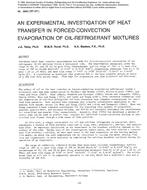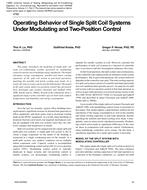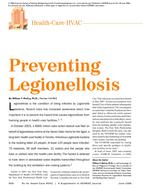In July 1986, reports surfaced of widespread moisture damage in walls of manufactured single-family homes in Wisconsin. The homes were manufactured by a company that declared bankruptcy and was liquidated just before the reports of moisture damage surfaced. This paper presents information about the nature and extent of the damage and summarizes the results of a health study of residents of the homes and air quality measurements of the homes.
Site visits and a home inspection program revealed decay in fewer than half the homes. Most decay was in the sheathing, with far less damage to the wail framing. A survey of homeowners and airtightness measurements further confirmed that the damage was primarily due to excessively high indoor humidities, which led to condensation in the walls during winter. The homes were very airtight, leading to very low ventilation rates during winter. Insufficient ventilation, combined with a relatively large number of occupants, appeared to have led to highhumidity conditions; the authors found a direct relationship between occupant density and the incidence of moisture problems. Other features, such as the type of heating system, were not found to have a significant influence.
Medical evaluation showed that the residents of these homesuffered more often from respiratory problems than residents of similar site-built homes included in the study. This appears to be related more to the high level of several pollutants in the homes than to the presence of fungal spores. However, no single individual contaminant could be identified as responsible for the irritant effect.
Citation: ASHRAE Transactions, vol. 95, pt. 1, Chicago 1989
Product Details
- Published:
- 1989
- Number of Pages:
- 10
- File Size:
- 1 file , 1.2 MB
- Product Code(s):
- D-24519


